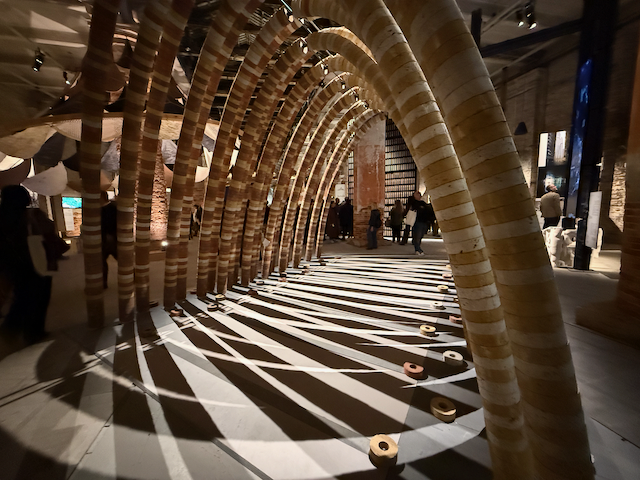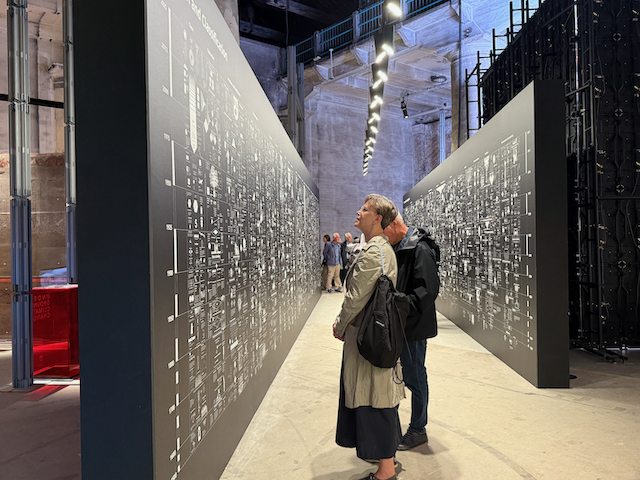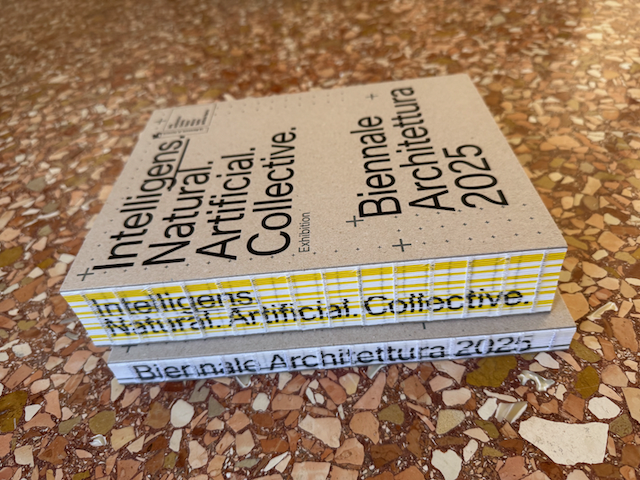The 19th International Exhibition La Biennale Architettura in Venice counts more participants than ever before - a record. Two days are barely enough for a tour of the Giardini and the Arsenale - and then there also are pavilions scattered around the city. There are too many exhibited installations, models, photos and experiments. Many of them are not self-evident, so a spirit of enquiry is required, even from visitors. Those who leave the exhibition with the impression that they want to delve deeper into some of the topics will certainly consider whether the catalogue is worthwhile.

Photo: Elephant Chapel by Booserm Premthada, photo: Sandra Hofmeister
Opus Magnus
Two volumes with open spine between grey cardboard covers. 508 pages on the main exhibition and 196 on the national contributions and collateral events. That sounds like a hefty tome, but there are a lot of directories - everyone involved wants to be named. There are also short CVs, for example on John Ruskin and Carlo Ratti, Hans Joachim Schellnhuber and Julia Watson. No question, the catalogue is an upus magnus!

Photo: Sandra Hofmeister
Let's move on to the actual documentation section of the two volumes: the projects on display in the main exhibition are presented very briefly, even more briefly than in the exhibition. Short text, photo, done. The presentation in the catalogue has been reduced to the bare essentials in order to include the wealth of projects. The catalogue is therefore much more concise than the documentation in the exhibition itself. Essays and conversations are interspersed in the individual chapters ‘Natural’, ‘Artificial’ and ‘Intelligens’, clearly differentiated from the rest on yellow pages. Mario Carpo summarises the history of artificial intelligence, Stefano Boeri talks to the British urban planner Ebenezer Howard, the historic founder of the garden city movement, who died in 1928. His post-mortem conversation with the British urban planner focusses - naturally - on vertical forests. And sociologist Albena Yaneva from the Politecnico in Turin discusses the selection of exhibits in the ‘Collective’ section - with a brief introduction to the topic. Anyone wishing to delve deeper into the topics covered in the Biennale catalogue will find what they are looking for in the essays - although not all of them. The small volume on the country pavilions, on the other hand, provides an overview of all contributions and participants. However, the editorial deadline was so early that there are no photos of the installations, but there are many renderings, even more lists of names and minimal information.
“Intelligens. Natural. Artificial. Collective. Biennale Architettura 2025”, vol 1 & 2, Exibition, Participating Countries & Collateral Events, May 2025, ISBN 9788898727995
